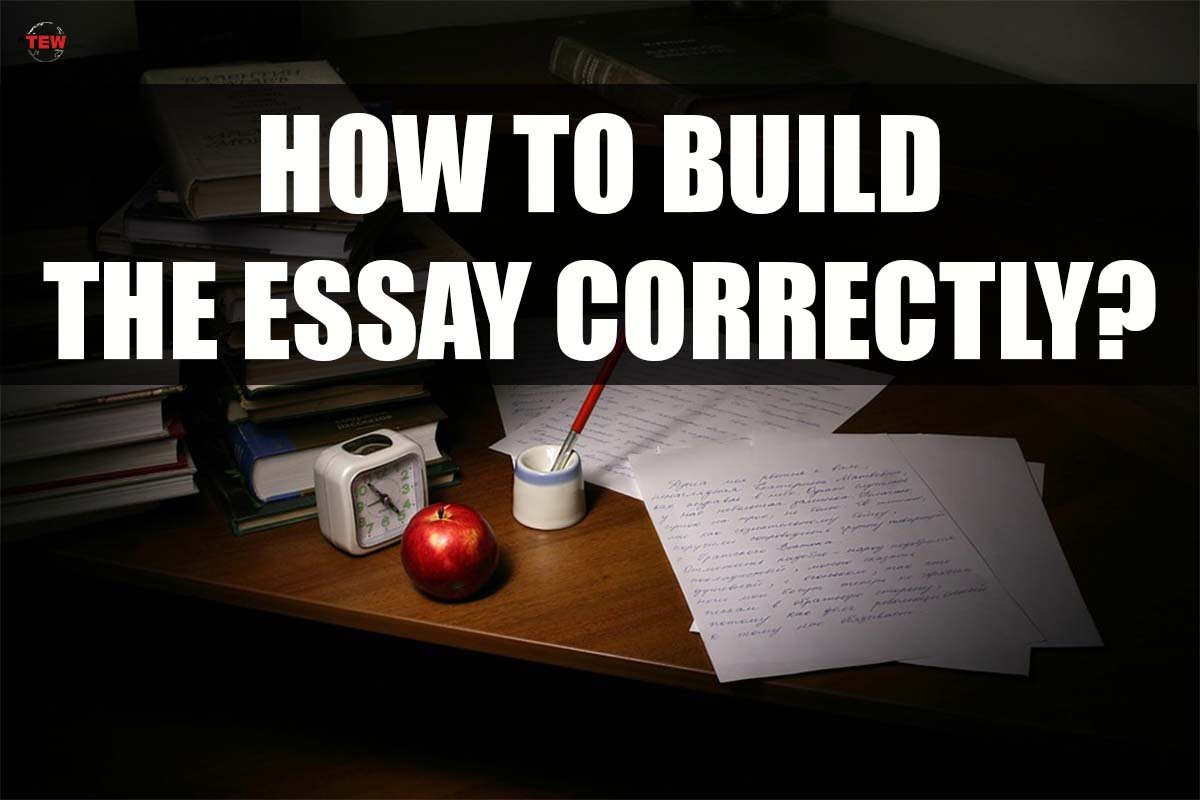Are you a student struggling to construct essays in the correct format and style? Don’t worry in this blog post, we’ll provide comprehensive tips on how to structure your essay and make sure all your key points are accounted for Ways to Build essay Correctly.
We will cover everything from finding resources to outlining arguments.
So read on if you’re ready to learn more about Ways to Build essay Correctly!
1. Understand the essay topic and what is expected from you

Before you start writing, it is important to understand the essay topic and what it requires of you.
Make a note to yourself of the basic requirements for your essay, Follow The Ways to Build essay Correctly it might be:
1000 word essay, argumentative essay, include examples to support your statements. Take the time to read all the guidelines and prompts provided, and make sure you understand the purpose of the essay. Are you being asked to argue a particular point of view? Analyze a certain topic.
Once you understand what is expected of you, brainstorm and make a plan before diving into the first draft of your essay. Take the time to understand the essay topic and plan.
2. Research relevant information and develop your own ideas
You can find a ton of resources to aid you in this process. Start by brainstorming ideas and gathering information from reputable sources such as academic journals or articles.
You can seek guidance from your professors or tutors who may be able to provide more insight and resources.
If for some reason you are unable to write an essay, there is help available. An essay writing service essaywriterservices.org can provide you with guidelines and resources to get you started. Or knock off all the essay writing work for you altogether, it’s up to you.
Remember, your essay should showcase your own ideas and analysis. So don’t be afraid to challenge conventional wisdom and explore your own unique perspective.

How to check information for accuracy?
- Check the source. Is the source reliable? Is it an expert on the topic? Checking the source can help you to determine whether the information is reliable.
- Consider the context. What was the purpose of the information? Was it meant to be factual, or was it opinion? Was it given in a formal setting, or was it a casual conversation? The context can give you clues about whether the information is reliable.
- Compare with other sources. Do other sources say the same thing? If they don’t, why might that be?
- Use your own knowledge. If you know something about the topic, you can compare what you know with what you’re reading. If there are inconsistencies, then the information might not be accurate.
- Check for bias. Bias is when someone has a preference or preconceived notion that affects their ability to be impartial. When there’s bias present, it can make information less accurate.
- Ask an expert. Experts have a lot of knowledge about their field, and they can usually tell you pretty well whether something is accurate. Asking an expert is a great way to get reliable information
1. Create an introduction paragraph with a hook and thesis statement
A hook can be a provocative question, a surprising statistic, or even a witty anecdote that sets the tone for your essay.
Along with this, a clear and concise thesis statement presents. The argument you plan on making throughout the rest of the essay.
By mastering these two techniques, you’ll be well on your way to crafting an introduction that captures your reader’s attention. And sets up the foundation for a Ways to Build essay Correctly.
2. Develop the body of the essay
Think about it like building a sturdy foundation for your argument. Each paragraph should focus on one main idea and be supported by relevant evidence and analysis.
Writing the body of the essay is the most voluminous part of the work. And you might want to delegate this process to someone and pay to do assignments for you. This is also a normal practice among students because, at a young age, you always want to spend more time with your friends.
This not only strengthens your argument but also helps to keep your writing organized and easy to follow. Remember to use credible sources and cite them to avoid plagiarism.
3. Construct the conclusion paragraph
Creating a conclusion paragraph is the last chance to leave a lasting impression on your reader.
Start with a clear and concise statement of the main points of your paper. This helps to remind your reader of the key takeaways from your writing.
Next, provide a final thought that ties everything together and leaves a lasting impression. Whether it’s a call to action or a final reflection, make sure it’s impactful and leaves your reader thinking long after they finish reading.
Revise the essay to correct any grammar or spelling errors. In today’s world, clear communication is essential.
Whether you’re writing a novel, sending an email, or texting a friend, using correct grammar and spelling can be crucial to getting your message across effectively.
That’s why it’s important to review your work and correct any mistakes. Small mistakes can be easy to overlook when you’re writing in the flow, but taking the time to review your work can help you spot errors that you might not have noticed otherwise.
Here are some tools that can help you make your text error-free:
- Hemingway editor
- Grammarly
- Quillboot
By reviewing what you’ve written and making sure it’s clear and error-free, you’ll be able to communicate your ideas more confidently and effectively.





